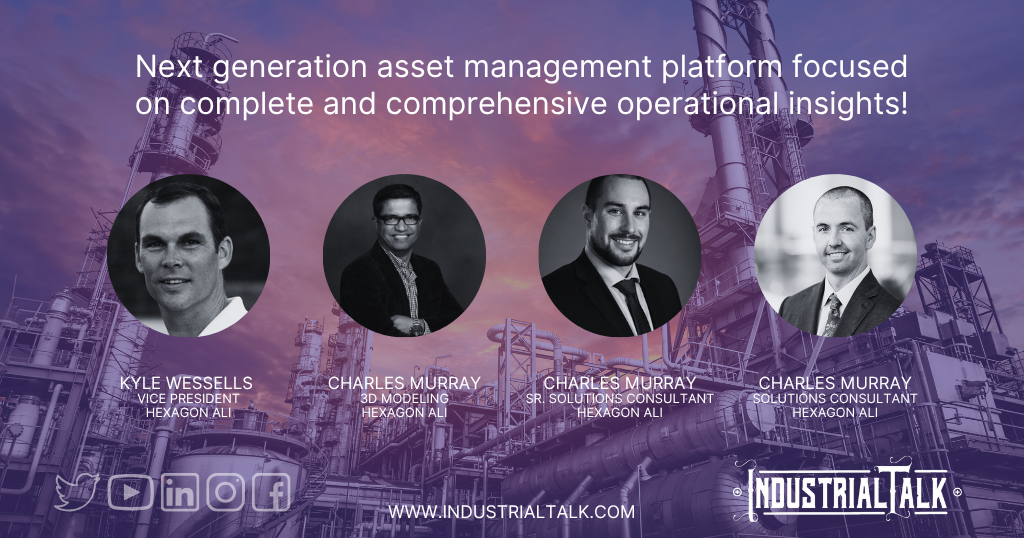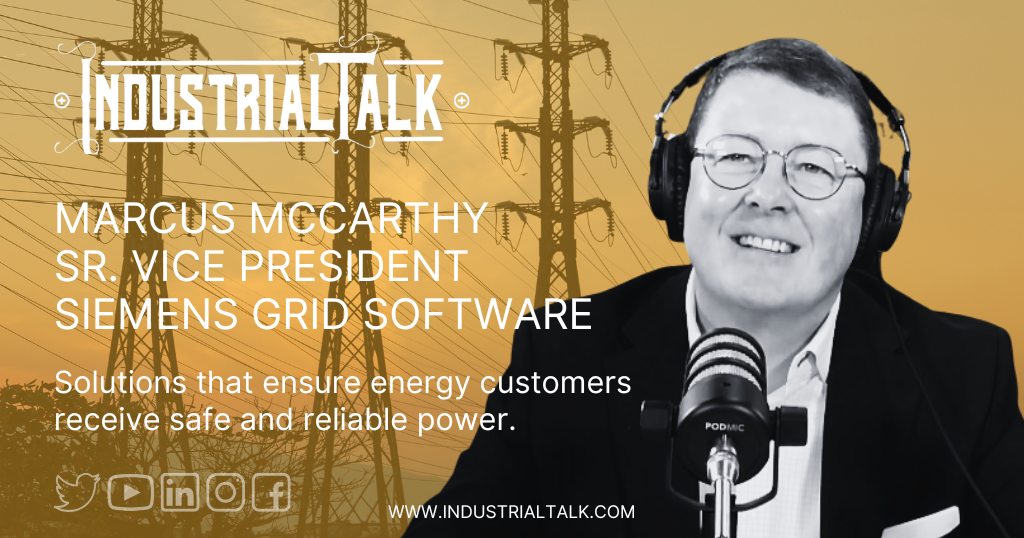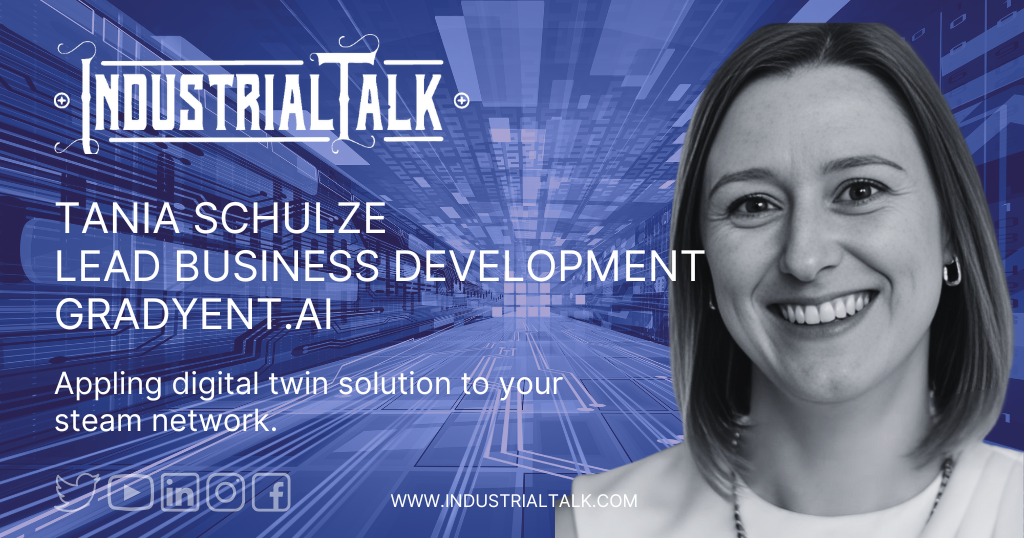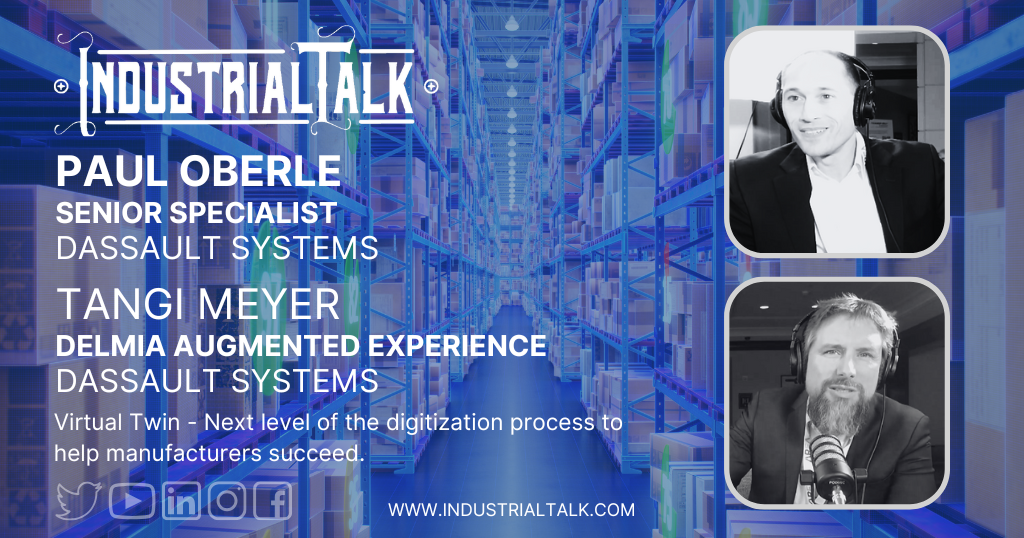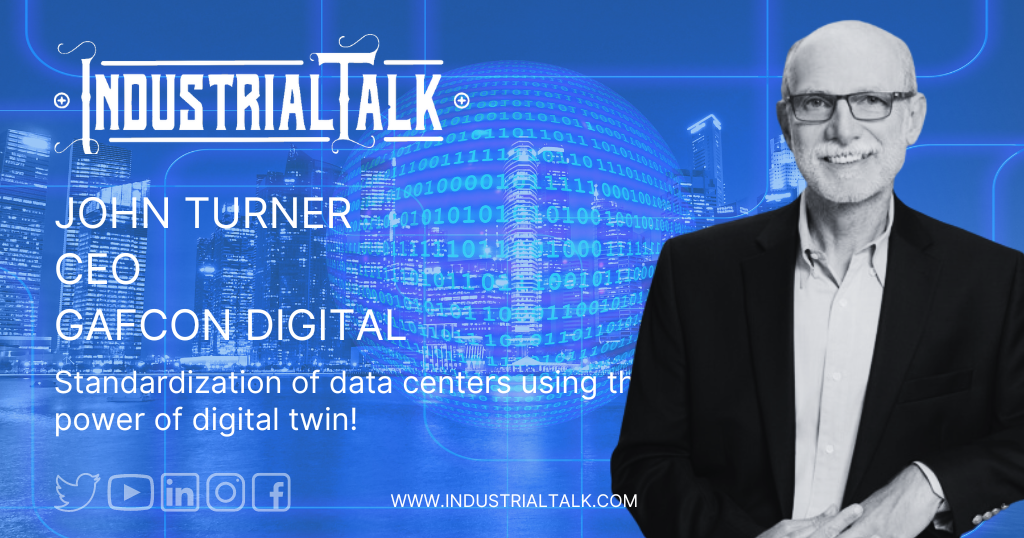Team Hexagon Asset Lifecycle Intelligence
Industrial Talk is onsite at Hexagon LIVE and talking to Kyle Wessells, Rahul Shinde, Ryan McOdrum and Matthew Peak at Hexagon ALI about “Game changing asset management platform”.
Scott MacKenzie hosts the Industrial Talk podcast, featuring discussions on industry innovations and trends. At Hexagon Live in Las Vegas, MacKenzie highlights the Asset Life Cycle Intelligence (ALI) platform and Asset Performance Management (APM) solutions. ALI integrates smart 3D design with SDx2 for continuous data synchronization, enhancing asset management. Hexagon EAM, a configurable system for enterprise asset management, supports compliance across various industries. APM uses machine learning to predict asset health and integrate sensor data, aiding in proactive maintenance. The conversation emphasizes the importance of data continuity and the role of AI in improving operational efficiency.
Marcus McCarthy with Siemens Grid Software
Industrial Talk is onsite at DistribuTech 2025 and talking to Marcus McCarthy, Sr. Vice President at Siemens Grid Software about “Energy Solutions for the Future”.
Scott MacKenzie and Marcus McCarthy discuss the evolving utility industry and the role of digital twins in improving efficiency and reliability. Marcus highlights the challenges of aging infrastructure, increased power demand, and the need for carbon removal. He emphasizes the importance of accurate digital models for better planning and decision-making. Marcus explains how Siemens’ digital twin solutions enable real-time operations and scenario simulations, enhancing network management. They also touch on the practicality of cloud technology and the industry’s readiness to adopt new technologies. The conversation underscores the urgency for utilities to invest in digital twins to meet future energy demands and optimize grid performance.
Tania Schulze with Gradyent
Scott MacKenzie hosts a podcast celebrating industry professionals and their innovations. In this episode, he discusses the application of digital twins to steam networks with Tania Schulze from Gradyent.ai. Tania explains that digital twins are digital representations of physical assets, enabling real-time monitoring, optimization, and predictive maintenance. She highlights the benefits of using physics-based models combined with machine learning to create accurate digital twins for steam networks. Tania emphasizes the importance of data quality and the challenges of implementing digital twins in existing plants. She also discusses the potential for significant energy savings and improved safety through digital twin technology.
Paul Oberly and Tangi Meyer with Dassault Systems
Industrial Talk is onsite at OMG, Q1 Meeting and talking to Paul Oberly and Tangi Meyer with Dassault Systemes about “Virtual Twin and digitization of processes!”
Scott MacKenzie hosts the Industrial Talk podcast, featuring Tangi Mayer and Paul Oberly from Dassault Systems. Tangi, a senior strategic planner, and Paul, the lead for Delmia augmented experience in North America, discuss the integration of advanced technologies like computer vision and AI to create a “virtual twin” of real-world manufacturing processes. This digital representation allows for efficient, error-free production by connecting the virtual and real worlds, enhancing safety, and optimizing workflows. They emphasize the importance of data in driving business operations and the potential for AR to revolutionize manufacturing and inspection processes, making them more intuitive and efficient.
John Turner with Gafcon Digital
Scott MacKenzie hosts John Turner, CEO of Gafcon Digital, to discuss the application of digital twins in data centers and the construction industry. Turner emphasizes the inefficiencies in current construction processes due to silos and the need for a digital building lifecycle. He highlights the importance of digitizing construction through BIM and integrating data from various sources like reality capture. Turner explains the benefits of a digital twin, including predictability in safety, cost, and schedule, and mentions that buildings consume 41% of the energy in the US. He advocates for a transformational approach to organizational change management to achieve these efficiencies.

